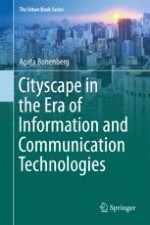2018 | OriginalPaper | Buchkapitel
3. Mass Communication and Public Space
verfasst von : Agata Bonenberg
Erschienen in: Cityscape in the Era of Information and Communication Technologies
Aktivieren Sie unsere intelligente Suche, um passende Fachinhalte oder Patente zu finden.
Wählen Sie Textabschnitte aus um mit Künstlicher Intelligenz passenden Patente zu finden. powered by
Markieren Sie Textabschnitte, um KI-gestützt weitere passende Inhalte zu finden. powered by
